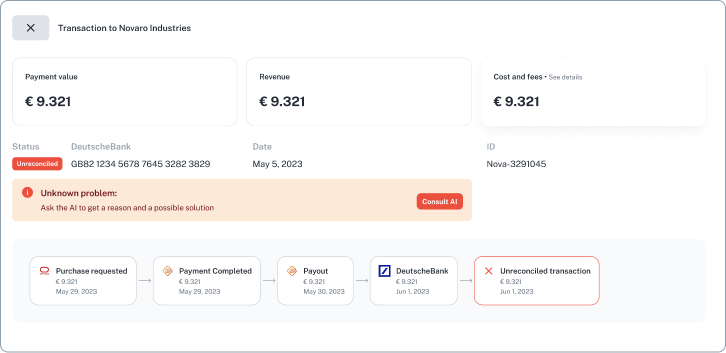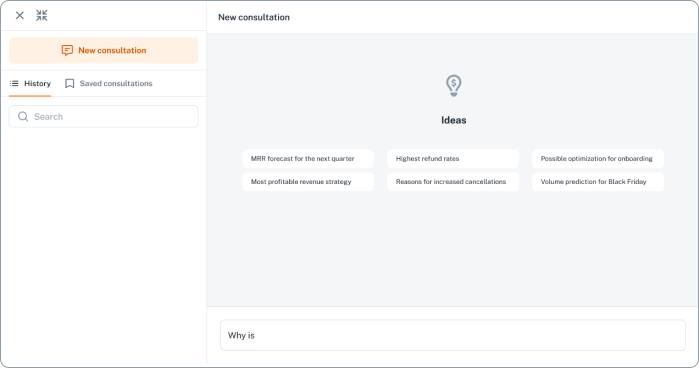How to leverage AI in payments

In our last article we covered the importance of data and analytics in the field of payments.
We outlayed the benefits of getting full payment data disclosure and what kind of information we can derive from a financial transaction. But this only represents half of the coin when using data for positioning platforms for growth.
That's why in this week's article we are going to focus on practical use cases for using payments data and combining it with artificial intelligence (AI) as the last part of our series.
Artificial intelligence has been rightfully a hot topic in the last couple of months. With its ability to analyze vast amounts of data and automate processes, AI holds immense potential for application in the payments industry. In this blog post, we will introduce three possible applications of AI and delve into the benefits they bring.
And we promise, it will not just be about fraud detection.
Risk Assessment
Traditional risk scoring models often rely on limited and outdated data points, resulting in inaccurate assessment, especially when dynamics suddenly change (think for example of the COVID crisis). AI, on the other hand, can leverage extensive datasets and sophisticated algorithms to provide more accurate risk assessments and scoring. By analyzing a wide range of data and most importantly combining it with alternative data sources (such as social media activity, websites, financial records, …), AI models can generate more comprehensive risk profiles. Such detailed profiles are extremely useful in doubtful situations where traditional risk models cannot read the subtleties of a given context.
A good example for such a situation could be the onboarding of new merchants. Historically this has been a very risky process, especially for younger, newly founded corporations which engage in multiple categories when selling products. By using AI, an algorithm could combine different types of historical data sets to get a unique and precise risk score facilitating onboarding hurdles for new merchants while reducing fraud risk for platforms.
Another senseful risk application is the use of AI in assessing compliance risks when it comes to transaction monitoring. Sophisticated AI algorithms are far superior in analyzing and comparing millions of transactions to automatically identify unknown unknowns, eg. new patterns of suspicious behavior that slip past the rule-based approach.
Predictive Analytics
One of the most common application fields of AI is predictive analytics. Here AI algorithms are analyzing transaction histories for patterns in order to predict future habits. This information can be utilized to create situational recommendations, identify potential cost-saving opportunities or send out proactive alerts.
Plus, by analyzing historical data, AI algorithms can identify trends in transaction volumes, peak periods, and specific customer segments. This helps in optimizing resource allocation, ensuring adequate infrastructure during peak times, and streamlining operations to meet customer demands. Predictive analytics can also identify potential bottlenecks or inefficiencies in the payment process, allowing companies to make data-driven decisions to improve transactional throughput and reduce processing time.
Some examples include:
Situational Recommendations: When reconciliation of a transaction fails, AI can look at historical data patterns and propose a solution or provide an array of reasons that could cause these types of problems. This use case is basically applicable to a variety of KPIs and situations. Think for example of recommendations for action in refunds, error handling when onboarding new merchants or the right way to handle fraud attempts. This category also includes the handling of customer tickets with chatbots and AI agents.

Potential Cost Saving & Revenue Generation Opportunities: Using AI in payment pricing can help to identify new revenue strategies by analyzing previous pricing strategies to find ways which maximize revenue potential. AI supported agents could run more flexible, complex pricing strategies (eg. dependent on subtleties within a specific merchant, geographic category) not only in order to fit merchants risk and product profile but to also cut costs when excessive expensive transactions are executed.
Proactive Alerts: AI can be used to send out alerts for an unusually high expected payment volume in order to prepare server and service capabilities. Or for a specific fraud attempt which historical methods could not detect. Going a step further, AI could sync with other databases to reference problems in other fields and industries and help to prepare a platform or marketplace to react even before macroeconomic issues tickled down to other areas.
Fraud Detection
Coming to the most obvious application field which has been part of many discussions and lists: fraud detection. AI-powered fraud detection systems have become a crucial component of modern payment ecosystems. By leveraging machine learning algorithms, AI can identify patterns and anomalies in real-time, enabling rapid detection of fraudulent activities. This is especially relevant since fraud attacks have to be known to be performed very swiftly, at unusual times or in moments of infrastructure (or human) weakness.
As AI systems continuously learn from new data, they also become more effective at identifying emerging fraud trends, adapting to evolving threats, and staying one step ahead of cybercriminals thus keeping fraudsters at bay and reducing false positives, which can be a common shortcoming of rigid rule-based systems.
Some examples of prominent use cases:
- Machine learning tools may be able to determine whether to initiate a fraud alert when a client approaches or exceeds a predetermined threshold depending on the customer's profile or financial status.
- Identify consumer groups who exhibit traits that put them at a higher risk of becoming fraud victims or perpetrators.
- Investigate cases of fraud using natural language processing (NLP) and negative media searches.
Pathway to Operational Efficiency and Cost Reduction
With proper AI implementation, platforms and marketplaces can achieve greater operational efficiency by not only improving accuracy of decision but also overall process speed. This allows companies to streamline their operations, reduce manual interventions, and automate repetitive tasks, resulting in significant cost savings and improved efficiency. Think for example of tasks like onboarding, support and reconciliation, tasks which usually require extensive FTE involvement can now be reduced to 1 FTE who oversees and manages the AI agent.

From detecting and preventing fraud to offering personalized customer experiences, AI is revolutionizing the payments landscape. As AI technologies continue to advance, we can expect further innovations that streamline transactions, improve security, and enhance user experiences. Embracing these advancements with senseful use cases and as early as possible can position payments processing companies at the forefront of the industry, delivering superior services and driving sustainable growth in a highly competitive landscape.


